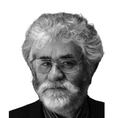This article comes from the Institut Henri-Poincaré (IHP), part of Sorbonne University, in the Latin Quarter of Paris. IHP has no permanent researchers but serves as a venue for mathematical collaborations and organises a series of programmes, seminars, lectures and training courses, welcoming more than 10,000 mathematicians each year. The institute also publishes four international scientific journals, the Annals of the IHP.
There is a museum in Maison Poincaré dedicated to mathematics and its interactions with science, computing, engineering, the environment and the arts. It is designed especially for students who can have fun seeing, hearing and touching mathematical exhibits. In the museum garden is a strange sculpture, a rulpidon, that is both round and square, with two, three or four holes depending on your viewpoint. The basement is a space for temporary exhibitions.
A French mathematician, physicist, engineer and philosopher of science, Poincaré was a scientific giant in the late 19th and early 20th century. Known as “The Last Universalist”, he made fundamental contributions to all major areas of mathematics, and established several new fields which continue to flourish.
Poincaré was a founder of topology, a kind of geometry where continuous deformations are allowed. Euclid permitted only rigid transformations so that triangles remain triangular. Topology – often called rubber-sheet geometry – allows stretching and shrinking so that triangles, squares and circles are equivalent. Poincaré made a deep conjecture on the topology of the 3-sphere that was proved only in 2002.
David Davin-Power, former RTÉ correspondent, dies aged 72
Former HSE manager shared child sexual abuse images of ‘utmost depravity’ online, Mayo court hears
Ballyfin restaurant review: ‘Downright dazzling, one of the most delicious things I’ve eaten this year’
We’re meant to bask in Saoirse Ronan’s feminist triumph, but I find it all a bit nauseating
Poincaré established a completely new area of mathematics – the qualitative theory of differential equations – showing that much can be learned from the form of an equation about the behaviour of its solutions even when a complete analysis is elusive. He applied this approach to the notorious three-body problem in celestial mechanics.
Following Kepler’s Law of elliptical planetary orbits, Newton completely solved the dynamical problem of two celestial bodies, but the orbits of three or more bodies, attracting each other through gravity, remained impenetrable. Poincaré's research on the 3-body problem led him to discover deliciously complex patterns of motion, establishing the principles underlying Chaos Theory, a field that still holds many challenges.
Poincaré also made seminal breakthroughs in relativity theory, and in 1905, was the first to suggest accelerating masses can emit gravitational waves. It was only in 2015 that these waves were observed directly, leading to the award, in 2017, of the Nobel Prize in physics to Rainer Weiss, Kip Thorne and Barry Barish.
In a more philosophical vein Poincaré argued the universe might be bounded and yet infinite. He imagined what would happen if the temperature of space decreased from the centre to the periphery so that everything contracted with outward distance. As travellers moved away from the centre everything would get smaller in such a way that it would take an infinite time to reach the boundary. In 1897, while active in the French Bureau des Longitudes, Poincaré promoted the decimalisation of angular measure and of time. This was never adopted, so we continue today with the sexagesimal heritage of Babylon.
Poincaré wrote several books popularising science and mathematics. He did not view mathematics purely as a branch of logic but regarded intuition as the very soul of the subject. He was masterful in presenting scientific concepts and ideas in an accessible way and his writings continue to provide inspirational, intuitive insight.
Peter Lynch is emeritus professor at the School of Mathematics & Statistics, University College Dublin. He blogs at thatsmaths.com
- Sign up for push alerts and have the best news, analysis and comment delivered directly to your phone
- Find The Irish Times on WhatsApp and stay up to date
- Listen to our Inside Politics podcast for the best political chat and analysis




